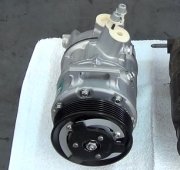Sunday, October 24th, 2010 AT 6:15 PM
I recently had a timing belt break while driving about 45 mph on a '92 Honda Prelude Si, engine type H23A1. I replaced the timing belt, along with water pump, timing balancer belt, both serpentine belts, as well as any involved gaskets/seals. The #1 piston was set at TDC and both camshaft gears are set with up marks pointing up and all notches lining up with the cylinder head. The replacement was done exactly according to the service manual. After replacing, the engine will not fire. The crank turns when the car is attempted to be started, and the spark plugs are indeed firing. I manually turned the crankshaft by the pulley bolt and verified all four strokes with respective intake/exhaust valves closed or open. Starting with #1 piston at TDC; piston #1 moves down (ignition stroke) with all valves closed, piston #1 then returns upwards with exhaust valves open (exhaust stroke), then piston #1 moves downward with intake valves open (intake stroke), then returns to the top with all valves closed (compression stroke). Upon removing the spark plug and doing a compression test (both with a meter and feeling by hand), there does not seem to be any compression during the compression stroke. I performed this same compression test on piston #2 and got the same result. I know the timing is exact (as described above) as you can watch the valves opening and closing as you see the piston moving up and down through all four strokes. I do not know what would cause a loss of compression like this, and think that might be the problem of the engine not firing. What might be the problem as to why the engine will not fire? Why might there not be compression in the cylinder during the compression stroke even though all valves are closed, considering this is happening in more than one cylinder? Any ideas on what to check or what is the problem? Thanks.



